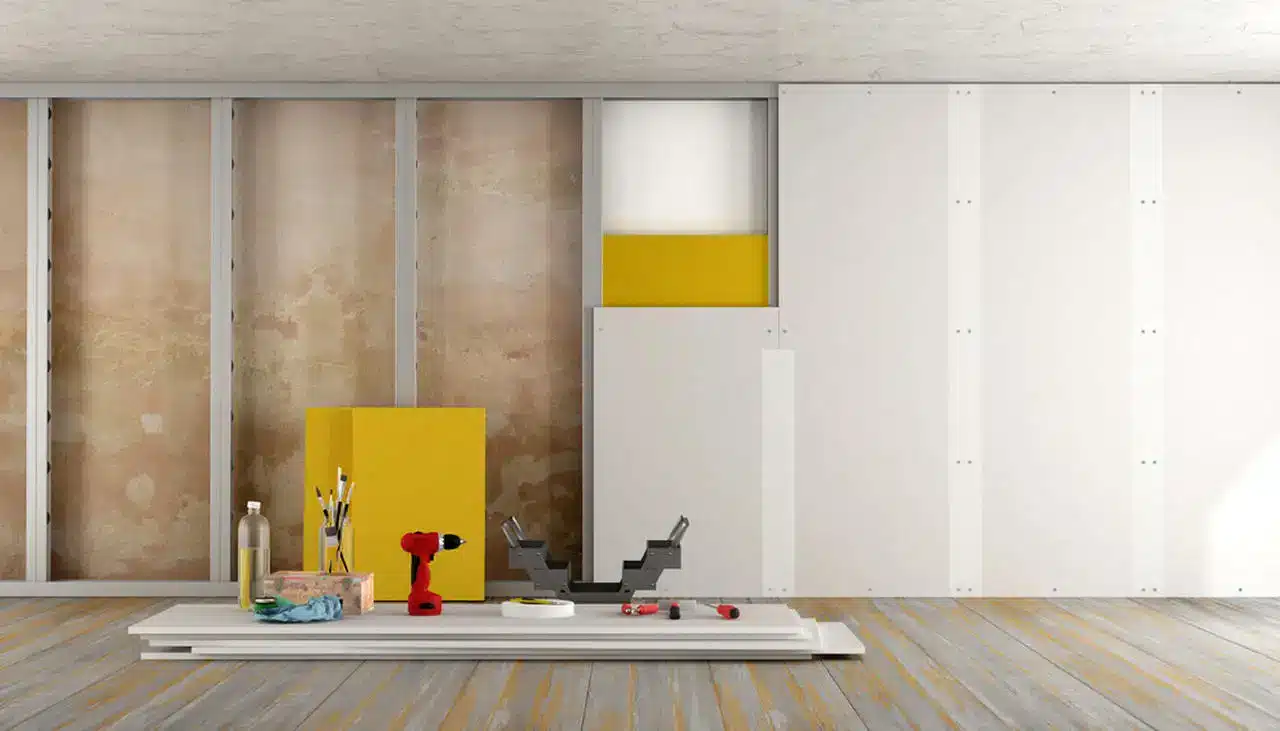Various sizes are available for residential drywall thickness, lengths, and widths depending on its purpose. All these measurements are essential in planning the drywall with utmost accuracy. However, the most crucial one is its thickness, the common one for residential projects is 1/2 inch.
Every type of project has some specific building codes and regulations for drywall thickness! But how do you know which one is the best one? Two things i.e. code and location, these factors decide the best thickness required. Moreover, various types of drywall are formulated for specific areas of a home. For example, soundproofing, mold-resistant, paperless moisture-resistant, and purple drywall. In short, drywall is also the most important material used for interior walls and ceilings.
If you are planning to build a residential project and are confused about selecting the drywall. One of the best solutions is to hire drywall estimators and get the required thickness and cost projections. This way, you will not have to spend extra money on rework and complete the projects under budget!
DIVE IN TO CONSIDER THE MOST COMMON THICKNESS OF DRYWALL USED IN RESIDENTIAL CONSTRUCTION AND START YOUR WORK WITHOUT FACING ANY ADDITIONAL ISSUES!
What is the purpose of Standard Drywall Thickness?
Do you know what the purpose of standard drywall thickness is? As the most common thickness is ½ inch, it maintains the equilibrium between the durability and the installation process. However, it is suitable for all types of applications within the residential building.
However, drywall comes with various sizes of thickness and each one of them is designed according to the purpose. The most common way to measure “inches” is directly proportional to the location of installation, the purpose of the wall, and building codes.
Common Thicknesses of Drywall
However, the most common thicknesses of drywall are as follows which are considered while building residential projects:
- 1/4 inch
- 3/8 inch
- 1/2 inch
- 5/8 inch
1/2-Inch Drywall Thickness
The 1/2-inch drywall thickness is suitable because of its durability and flexibility. The best thing about this efficient material is its offered strength. This strength is favorable for attaching two wall studs and a ceiling joist. Moreover, ½ inch drywall thickness is easy to manage and install in residential buildings.
To avoid mistakes and rework in the future, you must rely on Residential Construction Estimators and plan your drywall projects.
What are its applications?
- 1/2-inch drywall thickness is the best choice to cover interior walls and ceilings in residential projects. Moreover, it is very easy to install and flexible enough to form all shapes to fit accordingly. The purpose is to make the surface super smooth so that the paint or wallpaper sets smoothly
- Some residential owners demand soundproof rooms or spaces. For this reason, builders use multiple layers of 1/2-inch drywall thickness to create soundproof spaces. However, adding multiple layers is the best way to enhance the drywall performance!
- Other thicknesses such as 1/4-inch drywall is only common to form curved surfaces.
- Whereas, 5/8-inch drywall thickness is used for fire resistance and increases the overall performance! For example, it is installed between the living room and garage to reduce noise and protect drywall.
Sound Dampening and Moisture Resistant Drywall
5-8 inch or type X Moisture-resistant drywall is used in moist spaces such as bathrooms and kitchens. Moreover, it is the best way to use it for specific applications such as sound-dampening or mold-resistant drywall.
However, ½ inch drywall thickness is the most common for residential projects but you can use other thicknesses according to the requirements.
IN THE CASE OF DRYWALL BUDGET PLANNING, CONSULT OUR COMPETITIVE CONSTRUCTION ESTIMATORS AND GET THE MOST RELIABLE QUOTES TO FINISH YOUR PROJECTS WITHIN BUDGET AND TIMELINES!
Final Verdict!
To sum up this blog, it is proven that 1/2 inch drywall thickness is the most common and flexible that matches with codes and standards. However, the choice depends on the homeowners. The main thing is to first understand the unique needs of your interior walls and ceilings. This will help you decide what thickness must be used to address specific requirements.

